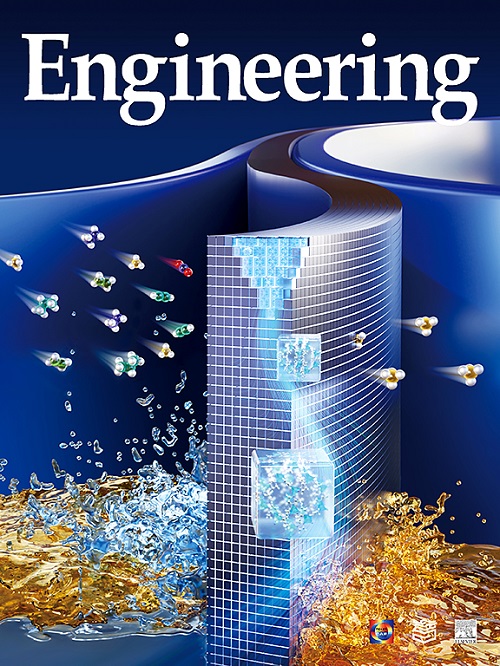液态金属驱动的超高电流协同冷却与充电
IF 10.1
1区 工程技术
Q1 ENGINEERING, MULTIDISCIPLINARY
引用次数: 0
摘要
大功率直流快速充电(DC-HPC),特别是兆瓦级充电电流(≥1000 A),有望显著缩短充电时间,提高电动汽车的耐用性,尽管存在瞬时热冲击的风险。传统的冷却方法分别传输电流和热量,难以同时实现灵活的可操作性和高效的冷却。在这项研究中,我们提出了一种基于镓的液态金属柔性充电连接器(LMFCC)的协同冷却和传输策略,该策略可以有效地消散超高热流,同时携带超高电流。由于液态金属(LM)优异的流动性和导电性,LMFCC具有优异的柔性操作性(弯曲半径为2 cm)和传输稳定性。这些性能明显优于固体金属连接器。优化了一种紧凑的感应电磁铁驱动方法,显著提高了LM流量和主动冷却能力,从而实现了突然低温(<;这种协同冷却和充电策略有望实现超高热通量热管理,并加速电动汽车行业的发展。本文章由计算机程序翻译,如有差异,请以英文原文为准。
Liquid Metal-Enabled Synergetic Cooling and Charging of Superhigh Current
High-power direct current fast charging (DC-HPC), particularly for megawatt-level charging currents (≥ 1000 A), is expected to significantly reduce charging time and improve electric vehicle durability, despite the risk of instantaneous thermal shocks. Conventional cooling methods, which separately transmit current and heat, struggle to achieve both flexible maneuverability and high-efficiency cooling. In this study, we present a synergetic cooling and transmission strategy using a gallium-based liquid metal flexible charging connector (LMFCC), which efficiently dissipates ultra-high heat flux while simultaneously carrying superhigh current. The LMFCC exhibits exceptional flexible operability (bending radius of 2 cm) and transmission stability even under significant deformation owing to the excellent liquidity and conductivity of liquid metal (LM). These properties are markedly better than those of solid metal connector. A compact induction electromagnet-driven method is optimized to significantly increase the LM flow rate and the active cooling capacity, resulting in sudden low temperature (< 16 °C at 1000 A). This synergetic cooling and charging strategy are expected to enable ultrahigh-heat-flux thermal management and accelerate development of the electric vehicle industry.
求助全文
通过发布文献求助,成功后即可免费获取论文全文。
去求助
来源期刊

Engineering
Environmental Science-Environmental Engineering
自引率
1.60%
发文量
335
审稿时长
35 days
期刊介绍:
Engineering, an international open-access journal initiated by the Chinese Academy of Engineering (CAE) in 2015, serves as a distinguished platform for disseminating cutting-edge advancements in engineering R&D, sharing major research outputs, and highlighting key achievements worldwide. The journal's objectives encompass reporting progress in engineering science, fostering discussions on hot topics, addressing areas of interest, challenges, and prospects in engineering development, while considering human and environmental well-being and ethics in engineering. It aims to inspire breakthroughs and innovations with profound economic and social significance, propelling them to advanced international standards and transforming them into a new productive force. Ultimately, this endeavor seeks to bring about positive changes globally, benefit humanity, and shape a new future.
 求助内容:
求助内容: 应助结果提醒方式:
应助结果提醒方式:


